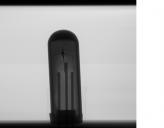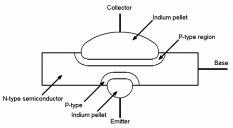
It allows to keep PV going, with more focus towards AI, but keeping be one of the few truly independent places.
-
Nice video, but I think it helps to delve back into history a little. The first transistor I used (circa 1966) was the Mullard OC71. Encased in glass, 'floating' in silicon grease, the transistor had an emitter on one side, a collector on the other, and a 'base' or substrate in the middle. Very much like a triode vacuum tube's cathode, anode and grid. I think it is helpful to think of the function of "holes" and "electrons" while gazing at these old glass transistors. Interestingly, if you removed the black paint off the glass, the transistor became light sensitive, and so the "photo-transistor" was born. Today's CCD and CMOS imagers are millions of times more complex, but the basic function of each transistor is the same: an emitter, a gate (base), and a collector (either of electrons or holes, depending on P or N type design)(MOS designs arrived in the 1970s, different element names, but still the same functional concept).
I have attached images of an OC71 PNP junction transistor from the factory, two with the black paint removed, and Xray through a very similar OC44, and a diagram of the junction elements showing the P-type diffusion regions in the N-type base.

 OC71.jpg480 x 838 - 217K
OC71.jpg480 x 838 - 217K
 OC71-Naked-Transistor.jpg208 x 295 - 48K
OC71-Naked-Transistor.jpg208 x 295 - 48K
 OC48-xray.jpg500 x 391 - 25K
OC48-xray.jpg500 x 391 - 25K
 ALLOYTR.jpg717 x 394 - 27K
ALLOYTR.jpg717 x 394 - 27K
Howdy, Stranger!
It looks like you're new here. If you want to get involved, click one of these buttons!
Categories
- Topics List23,993
- Blog5,725
- General and News1,354
- Hacks and Patches1,153
- ↳ Top Settings33
- ↳ Beginners256
- ↳ Archives402
- ↳ Hacks News and Development56
- Cameras2,368
- ↳ Panasonic995
- ↳ Canon118
- ↳ Sony156
- ↳ Nikon96
- ↳ Pentax and Samsung70
- ↳ Olympus and Fujifilm102
- ↳ Compacts and Camcorders300
- ↳ Smartphones for video97
- ↳ Pro Video Cameras191
- ↳ BlackMagic and other raw cameras116
- Skill1,960
- ↳ Business and distribution66
- ↳ Preparation, scripts and legal38
- ↳ Art149
- ↳ Import, Convert, Exporting291
- ↳ Editors191
- ↳ Effects and stunts115
- ↳ Color grading197
- ↳ Sound and Music280
- ↳ Lighting96
- ↳ Software and storage tips266
- Gear5,420
- ↳ Filters, Adapters, Matte boxes344
- ↳ Lenses1,582
- ↳ Follow focus and gears93
- ↳ Sound499
- ↳ Lighting gear314
- ↳ Camera movement230
- ↳ Gimbals and copters302
- ↳ Rigs and related stuff273
- ↳ Power solutions83
- ↳ Monitors and viewfinders340
- ↳ Tripods and fluid heads139
- ↳ Storage286
- ↳ Computers and studio gear560
- ↳ VR and 3D248
- Showcase1,859
- Marketplace2,834
- Offtopic1,320




